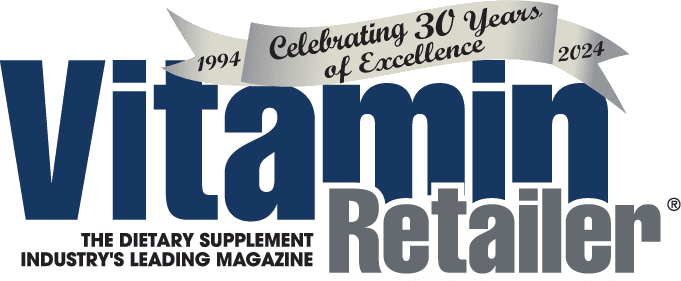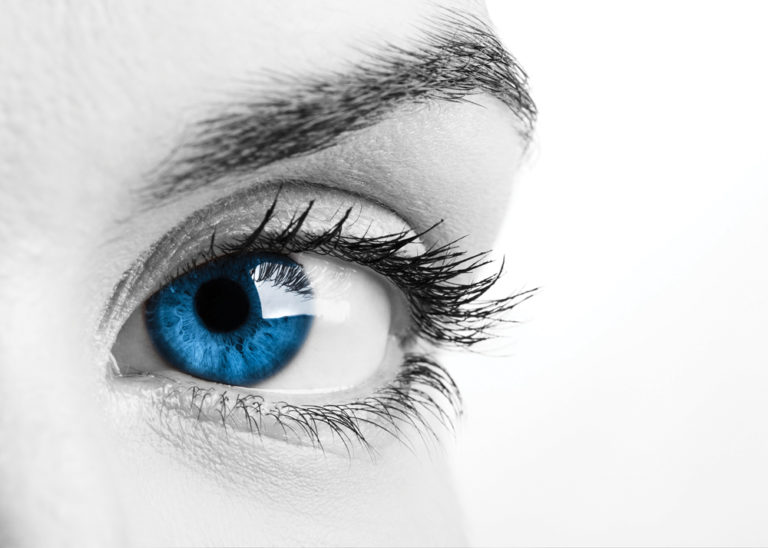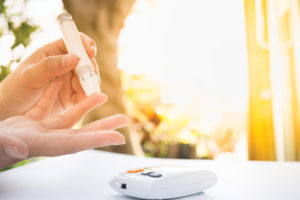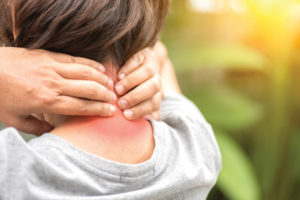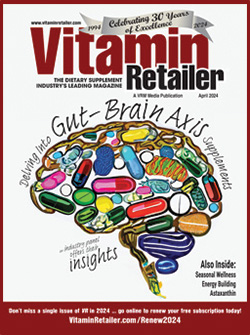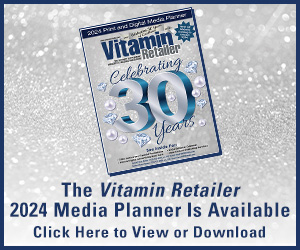Technology’s impact on eye health is widening the market to include consumers of all ages.
According to the National Eye Institute (NEI) of the National Institutes of Health (NIH), the number of people affected by the most common eye diseases including age-related macular degeneration (AMD), cataracts, diabetic retinopathy, and glaucoma is expected to double between 2010 and 2050.
The Centers for Disease Control and Prevention (CDC)’s Vision Health Initiative (VHI) has partnered with others to create a network dedicated to help improve eye health, reduce the incidence of vision loss and blindness and better the lives of people who currently suffer from vision loss. Along with the NEI, the CDC/VHI serves on the Healthy People 2020 Vision Work Group to make efforts towards eye health and vision a priority for Americans of all ages.
As the Baby Boomer population ages, the vision health category will continue to grow. “This group of people with good purchasing power will seek out nutritional supplements as a preventative measure against the development of cataracts and AMD and also as a means to avoid surgery,” said Bryan See, regional product manager at ExcelVite Inc., a branded ingredient manufacturer headquartered in Perak, Malaysia with offices in New Jersey.
“AMD is the most common cause of irreversible blindness in the industrialized world,” added Jennifer Weinhardt, BS, MS, research and development specialist at Texas-based Bluebonnet Nutrition. “AMD occurs in the light sensitive cells of the macula found in the middle of the retina and is manifested by a blurring of the central vision. 1.7 million Americans have AMD, and approximately 100,000 are blind from the disease.” According to Weinhardt, one out of six people between the ages of 55 and 64 have some form of AMD and by the age of 75, an estimated one out of three people will be impacted.
A 2003 study at Duke University found that half of Americans over the age of 65 would eventually develop either AMD, cataracts, diabetic retinopathy or glaucoma. Lifestyle factors, including a healthy diet with plenty of fruits and vegetables are preventive measures that can be taken.
Computer Visions Syndrome—A New Trend in the Market
A newer trend affecting the vision health of adults and children alike is also on the rise. “The market for a ‘lifestyle eye health’ product has been created due to the near constant exposure to blue light we now have,” said Jennifer Cooper, vice president of research and development and quality at Twinlab Consolidation Corporation in Florida. “Devices such as tablets and phones transmit blue light which can be harmful to your eyes,” added Weinhardt. “Its very short wavelength produces a higher amount of energy and studies suggest that, over time, exposure to the blue end of the light spectrum could cause serious long-term damage to your eyes.”
Cooper shared statistics on blue light exposure: children are exposed for six hours a day on average, teens an average of nine hours per day and adults, 10 hours daily. “This constant exposure has caused computer visions syndrome (CVS) to become the No. 1 work related complaint,” she stated. “The symptoms of CVS are most commonly eye fatigue, headaches and trouble focusing due to the fatigue one is suffering from. That ‘3 p.m. issue’ many of us associate with blood sugar, sleep, etc. could, instead, be related to CVS.”
“Sixty percent of Americans use digital devices more than five hours daily,” reported Ceci Snyder, global vision product manager at Kemin Industries, Inc. based in Iowa. “So Kemin sees an opportunity to introduce the importance of eye health at a younger age.”
“Globally it is estimated that roughly three billion people are heavy enough mobile device users to make blue light damage a concern for their lifestyle,” Cooper added. When compared with an estimated 178 million cases of AMD, Cooper noted that this really changes the playing field with regard to the eye health market. “Our lifestyle has created a situation where eye health has moved from a 55 and up age issue to an issue for everyone, as the damage being done is cumulative and the end results of this cumulative damage are unknown.”
While awareness for the issues related to digital device exposure are increasing, Cooper pointed out that the only products currently available to assist with reducing blue light are computer eyewear and apps. “Google Trends shows that interest level in blue light glasses has been increasing significantly and steadily over the past five years, while app purchases on the Google and Apple app stores show that [more than] 50 million blue light filtering apps have been downloaded.” She believed CVS to be a major factor driving these purchases.
Supplementing Vision Health
Carotenoids
Studies have found that a diet rich in carotenoids can be helpful in maintaining good eye health and preventing age-related eye diseases. Carotenoids are found in green, leafy vegetables as well as orange and red fruits and vegetables and are known for their antioxidant abilities.
Lutein and zeaxanthin are two carotenoids with antioxidant properties that are found in the eye. The body doesn’t produce these nutrients itself, so it’s necessary to consume them in food or supplement form. The two nutrients can help preserve eye health by filtering blue light before it can damage the macula.
“Zeaxanthin protects the eye by absorbing destructive blue light and reducing glare,” explained Weinhardt. “Zeaxanthin protects cells and membranes via reducing harmful free radicals by donating electrons to reactive oxygen species (ROS), thus, reducing oxidative stress within the body and more importantly in the eyes. This act will maintain the health and integrity of the eye for optimal visual health.”
According to Snyder, vision health supplements containing lutein have been developed in virtually every imaginable form, including tablets, capsules, soft gels, gummies, powdered drink mixes, and ready-to-drink liquids. For consumers over the age of 60, easy-to-swallow soft gel capsules and drinks are becoming more popular.
“Many eye health nutrients are fat-soluble,” said Weinhardt, “so it is typically best to consume these nutrients in a soft gel or liquid whereby the nutrient is surrounded by a lipid (fat) matrix allowing for more efficient delivery into the small intestine and subsequent absorption into the body.”
Snyder reported that Kemin’s FloraGLO is the lutein brand most clinically researched and most recommended by eye doctors. “FloraGLO Lutein contains free lutein and free zeaxanthin, the forms of lutein and zeaxanthin naturally found in most vegetables and fruits,” she stated. “Our product does not contain lutein esters, zeaxanthin esters or synthetic carotenoids.”
Doctor’s Best, a nutritional supplement company based in California, uses Kemin’s FloraGLO in their Lutein with FloraGLO soft gel formulation. The gluten-free soft gels are available in quantities of 60.
Bluebonnet’s best-selling vision health product, Eye Antioxidant with Zeaxanthin, contains amino acids, vitamins, minerals and herbal antioxidants for maintaining eye health, including natural beta carotene, vitamin C, natural d-alpha tocopherol, lutein, citrus bioflavonoids, bilberry, ginkgo, alpha lipoic acid, N-acetyl-L-cysteine, taurine, glutathione, zinc, chromium and selenium. The vegetarian capsules are available in quantities of 60 or 120.
ExcelVite supplies a mixed-carotene complex to supplement manufacturers called EVTene. Derived from palm fruits, EVTene has the highest level of alpha-carotene on the market. Alpha-carotenes, important for healthy vision and the prevention of night blindness, are pro-vitamin A and can be converted to vitamin A by the body as necessary once ingested.
EVTene has been used in many vision health products, including CarotenALL by Jarrow Formulas. “Compared with other regular vision health products with only beta-carotene or lutein/zeaxanthin, CarotenALL contains a variety of important eye health carotenoids in significant levels—including alpha- and beta-carotene, lutein/zeaxanthin, lycopene and astaxanthin,” said See.
Reformulations and New Products
Twinlab has recently upgraded their Ocuguard Plus line to include three new Blutein eye health products, formulated with heavy users of digital devices in mind.
Ocuguard Plus uses proven Age-Related Eye Disease Study
(AREDS) formulation ingredients along with zeaxanthin, bilberry extract and lutein from Lutemax 2020—derived from marigold extract and containing lutein as well as enhanced levels of both zeaxanthin isomers (RR-and RS [meso]-zeaxanthin). This is the first legacy product from the Twinlab VMS line to be newly launched in updated packaging with improvements to the formulation. In addition to using Lutemax 2020 and providing a vegetable-based capsule, magnesium stearate has been removed, excipients have been minimized and vitamin C levels have been adjusted to align with the latest scientific recommendations. Ocuguard plus is available in 60, 120 and 144 count sizes.
Three new products from Twinlab’s Blutein line are slated to launch this May:
Ocuguard Blutein Protection includes Lutemax 2020, as well as blueberry extract and fucoxanthin for additional protection against oxidative stress. “This formulation is designed to provide the most protection possible from heavy digital device usage,” explained Cooper. The capsules are available in quantities of 30.
In addition to protecting eyes from blue light, Cooper referenced a clinical study, which found that Lutemax 2020 could also improve mental processing speed and visual reaction speed. Ocuguard Blutein Performance builds upon those findings and includes a unique formulation of caffeine, as well as Twinlab’s proprietary GG Brain Energy Blend. The capsules are available in quantities of 30.
Ocuguard Blutein Chewables are ideal for children who are exposed to digital devices. “Their exposure is more damaging as the young lens lack a yellow film that is developed later in life, which helps filter away some of the blue light being emitted by cell phones, tablets, laptops and TVs,” Cooper stated. These tablets with Lutemax 2020 provide macular carotenoids in a child-friendly chewable formulation. The tablets are available in quantities of 60.
The Macular Carotenoid Trade Association
In a December 2016 press release, Kemin and OmniActive Health Technologies, Ltd. shared plans to form a Lutein and Zeaxanthin Trade Organization. The mission of the organization, now referred to as the Macular Carotenoid Trade Association, is to further the understanding of the nutritional benefits of macular carotenoids. “This spring, we will be discussing the initial strategy with suppliers and asking them to join us in growing the awareness and use of macular carotenoids to promote health and nutrition,” said Snyder. “We are anticipating an official launch this coming fall.”
Retailer Support
When asked how manufacturers help retailers address the vision health needs of their customers, Ramona Billingslea, marketing manager at Betsy’s Health Foods in Houston, TX remarked on the great educational opportunities available. “Also,” said Billingslea, “packaging is increasingly doing more to explain the benefits of products on the bottles themselves.”
One challenge for retailers noted by Billingslea is the lack of information about the overall support a person needs to address vision health. In addition to providing the benefits of a particular product, supplying retailers with broader information about eye health could help them with product promotion.
One tip for retailers from Cooper is making consumers aware that eye health is part of a lifestyle issue. “Connect with them about CVS, as it is very relatable,” she stated. “Most of us who stare at computer screens way too often have had the feeling of fatigue and ‘eye soreness’ or dry eyes with some consistency.” She also remarked that talking about how digital devices such as mobile phones can be harmful to the yes alerts customers to the fact that eye health is an issue for consumers of all ages. “We’ve found in discussions that connecting blue light damage to eye fatigue and stress [symptoms of CVS] is a good way to make the issue relatable to people.”
Kemin’s video at BeatTheBlue.com may be a helpful tool for retailers. The video, appealing to a wide demographic, explains how blue light enters the eye. Retailers can use the free video in-store with a display or on their own websites, suggested Snyder. VR
For More Information:
Bluebonnet Nutrition, (281) 240-3332
ExcelVite, Inc., (732) 906-1901
Kemin Industries, Inc., (515) 559-5100
Twinlab Consolidation Corporation, (800) 645-5626
